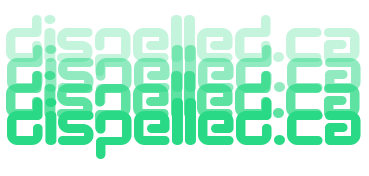Advanced Circuit Design
Circuit design is a fundamental aspect of electrical engineering, involving the creation of electrical circuits to perform specific functions. This tutorial will explore advanced techniques in circuit design, including schematic creation, simulation, and practical implementation.
Introduction to Circuit Design
Circuit design involves the process of designing electrical circuits to achieve a desired function. This includes selecting components, creating schematics, simulating the circuit, and building the physical circuit. Advanced circuit design requires a deep understanding of electrical principles, components, and tools.
Steps in Circuit Design
The process of circuit design can be broken down into several key steps:
- Define Requirements: Determine the specifications and requirements of the circuit, including input and output parameters, power supply, and performance criteria.
- Select Components: Choose appropriate components based on the requirements, such as resistors, capacitors, transistors, and integrated circuits.
- Create Schematic: Draw a schematic diagram of the circuit, showing the connections between components and their values.
- Simulate Circuit: Use simulation software to test the circuit's performance and identify any issues before building the physical circuit.
- Build Prototype: Assemble the circuit on a breadboard or PCB (Printed Circuit Board) and test its functionality.
- Optimize and Iterate: Make necessary adjustments to the design based on testing results and iterate the process until the desired performance is achieved.
Advanced Techniques in Circuit Design
Here are some advanced techniques to enhance your circuit design skills:
1. Schematic Creation
Creating a clear and accurate schematic is crucial for successful circuit design. Here are some tips:
- Use Standard Symbols: Use standard electrical symbols for components to ensure clarity and consistency.
- Label Components: Clearly label all components with their values and reference designators (e.g., R1, C1, U1).
- Organize Layout: Arrange components logically and minimize crossing wires to make the schematic easy to read.
- Include Notes: Add notes and annotations to explain complex sections of the circuit.
2. Circuit Simulation
Simulation allows you to test and validate your circuit design before building it. Here are some popular simulation tools:
- SPICE: A powerful simulation tool for analog and mixed-signal circuits. Tools like LTspice and PSpice are widely used.
- Multisim: A user-friendly simulation tool with a comprehensive component library and interactive simulation capabilities.
- Proteus: A versatile tool that combines schematic capture, simulation, and PCB design.
Use simulation to analyze the circuit's behavior, identify potential issues, and optimize component values.
3. PCB Design
Designing a PCB involves creating a physical layout of the circuit. Here are some tips for effective PCB design:
- Component Placement: Place components logically and minimize trace lengths to reduce noise and signal loss.
- Routing: Use appropriate trace widths and routing techniques to ensure reliable connections. Avoid sharp angles and crossing traces.
- Ground Plane: Use a ground plane to reduce electromagnetic interference (EMI) and improve signal integrity.
- Design Rules: Follow design rules and guidelines provided by the PCB manufacturer to ensure manufacturability.
4. Power Management
Effective power management is essential for reliable circuit operation. Consider the following:
- Power Supply: Choose a stable and appropriate power supply for your circuit. Consider voltage regulation and filtering.
- Decoupling Capacitors: Use decoupling capacitors near power pins of ICs to reduce noise and stabilize voltage.
- Thermal Management: Ensure proper heat dissipation for components that generate heat. Use heat sinks and thermal vias if necessary.
Example: Designing a Simple Amplifier Circuit
Let's design a simple amplifier circuit using an operational amplifier (op-amp). Here are the steps:
Define Requirements
We want to design an amplifier with a gain of 10, powered by a 12V supply, and capable of amplifying audio signals.
Select Components
- Op-Amp: LM741
- Resistors: R1 = 1kΩ, R2 = 10kΩ
- Capacitors: C1 = 10µF (input coupling), C2 = 10µF (output coupling)
Create Schematic
Here is the schematic diagram of the amplifier circuit:
+12V
|
R2 (10kΩ)
|
Input --C1--|-- R1 (1kΩ) --|-- Output
| |
LM741 C2
| |
GND GND
Simulate Circuit
Use a simulation tool like LTspice to simulate the amplifier circuit. Verify the gain and frequency response.
Build Prototype
Assemble the circuit on a breadboard and test its functionality. Verify the gain and check for any issues like noise or distortion.
Optimize and Iterate
Make necessary adjustments to the component values or layout based on testing results. Iterate the process until the desired performance is achieved.
Practice Exercises
Here are some practice exercises to help you develop your circuit design skills:
- Design a low-pass filter circuit with a cutoff frequency of 1kHz. Create the schematic, simulate the circuit, and build a prototype.
- Design a voltage regulator circuit using a 7805 IC to provide a stable 5V output. Create the schematic, simulate the circuit, and build a prototype.
- Design a simple LED blinking circuit using a 555 timer IC. Create the schematic, simulate the circuit, and build a prototype.
- Design a basic power amplifier circuit using a transistor. Create the schematic, simulate the circuit, and build a prototype.
- Design a digital counter circuit using flip-flops. Create the schematic, simulate the circuit, and build a prototype.
Check out some Bands on Bandcamp.com. Seven Times Refined by Altogether Steve and the Mercenaries, Crazy Fingers (Vancouver 1991), Flying Butt Pliers, and Hammy Ham Hands.
Proudly powered by a Text Editor, an IDE, an SFTP client, some Internet searches, and more recently help from some AI.
2025 dispelled.ca end of file.
